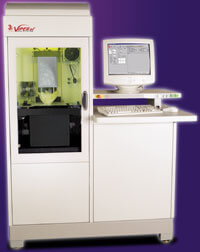SLA Fast Prototyping Machine
A high-precision 3D prototyping machine is available to Viterbi faculty and researchers for use for creating detailed, complex components. The machine is located in the Petroleum and Chemical Engineering Building (PCE) 401. It was obtained by Viterbi Research Professor Wei-Min Shen, who coordinates its use. Costs are based on an hourly rate and are part of the User Agreement included below. For more information about the equipment's capabilities, and to schedule time on the machine, please contact Dr. Shen at shen@isi.usc.edu.

USC User Agreement for Using the High-Precision Fast Prototyping SLA Machine
I. Procedure for USC internal and external users:
- Users submit CAD design STL files to the Polymorphic Robotics Lab (attention to Professor Wei-Min Shen) at ISI (shen@isi.usc.edu);
- PRL/ISI estimate (i) the cost in terms of the number of hours required to produce the parts, and (ii) the cost of the material;
- User agrees with the estimated cost;
- PRL/ISI produce the parts for the user and send an invoice to the user;
- The user pays the cost to PRL/ISI.
Published on January 24th, 2017
Last updated on April 9th, 2020







